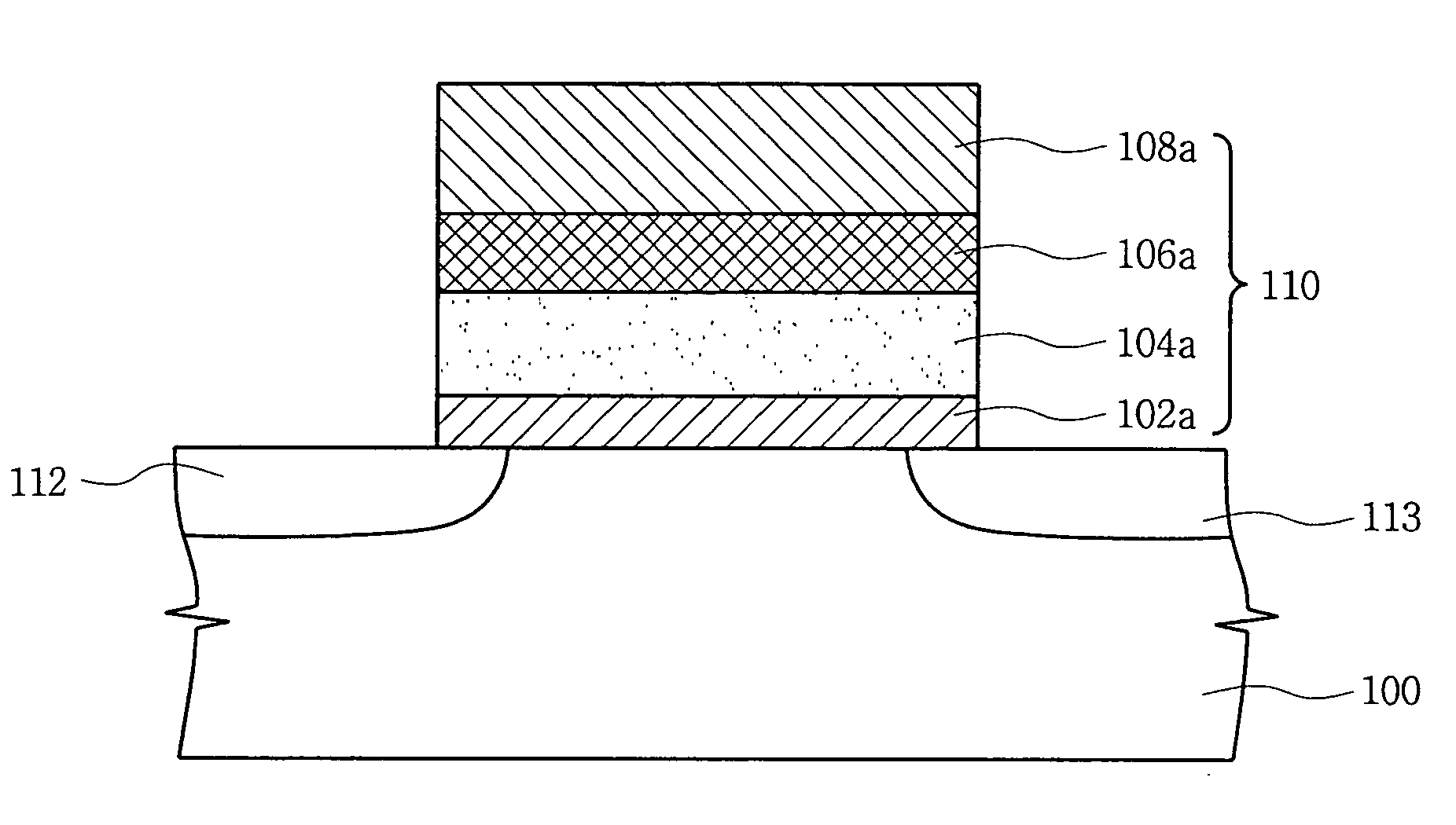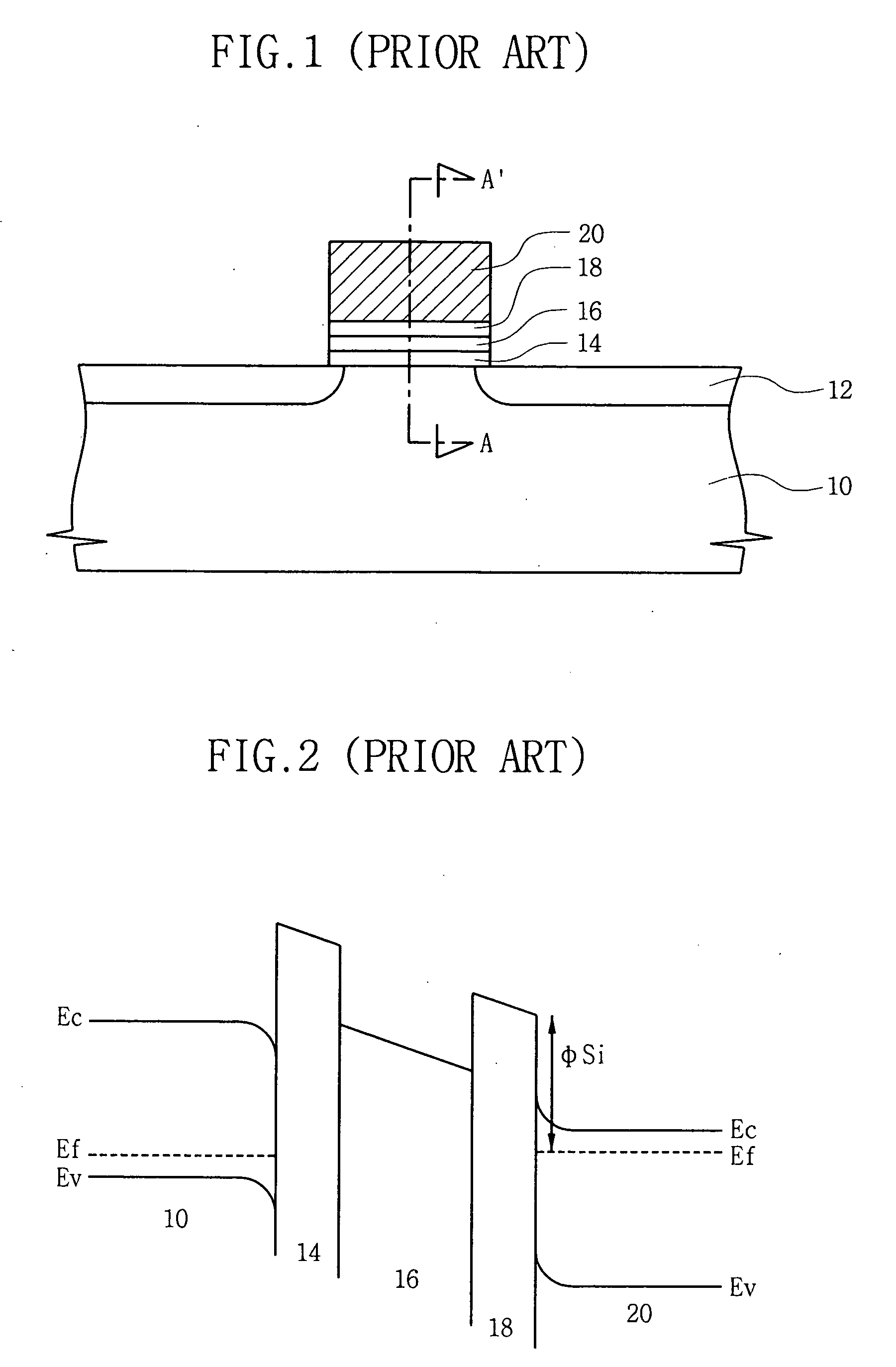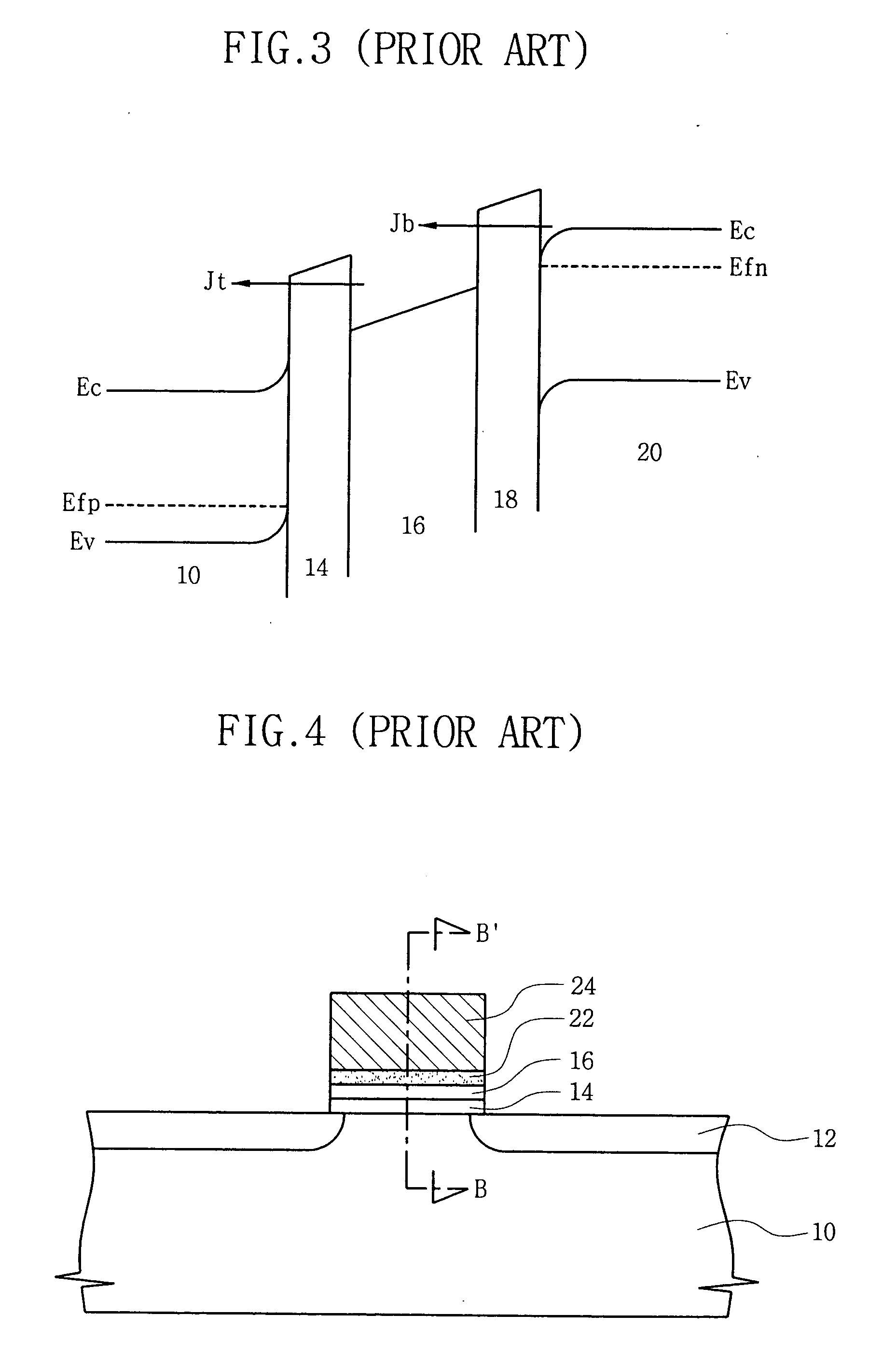Nonvolatile memory device and method of fabricating the same
a non-volatile memory and memory device technology, applied in the direction of semiconductor devices, basic electric elements, electrical apparatus, etc., can solve the problems of insufficient guarantee of the coupling ratio of the cell transistor in the non-volatile memory device, the difficulty in performing subsequent processing steps, etc., to achieve the effect of reducing the program and erase voltage, and improving the program and erase speed
- Summary
- Abstract
- Description
- Claims
- Application Information
AI Technical Summary
Benefits of technology
Problems solved by technology
Method used
Image
Examples
Embodiment Construction
[0064]FIGS. 7A through 7B are sectional views illustrating a method of fabricating a nonvolatile memory device according to an embodiment of the present invention.
[0065] Referring to FIG. 7A, an insulating layer 102 is formed on a p-type semiconductor substrate 100, and the insulating layer 102 will function as a tunnel oxide layer for electron tunneling. The insulating layer 102 is composed of SiO or SION, and the material may be deposited using a chemical vapor deposition (CVD) method.
[0066] Then, a first high-k dielectric 104 is deposited on the insulating layer 102 to form a trapping layer functioning as a charge storage layer. The formation of the trapping layer using the high-k dielectric 104 is one of the features of the present invention, and the first high-k dielectric 104 is preferably deposited using an atomic layer deposition (ALD) or CVD method. The first high-k dielectric 104 is formed of a metal oxide layer, and may be composed of a material selected from HfO, HfON,...
PUM
 Login to View More
Login to View More Abstract
Description
Claims
Application Information
 Login to View More
Login to View More - R&D
- Intellectual Property
- Life Sciences
- Materials
- Tech Scout
- Unparalleled Data Quality
- Higher Quality Content
- 60% Fewer Hallucinations
Browse by: Latest US Patents, China's latest patents, Technical Efficacy Thesaurus, Application Domain, Technology Topic, Popular Technical Reports.
© 2025 PatSnap. All rights reserved.Legal|Privacy policy|Modern Slavery Act Transparency Statement|Sitemap|About US| Contact US: help@patsnap.com



